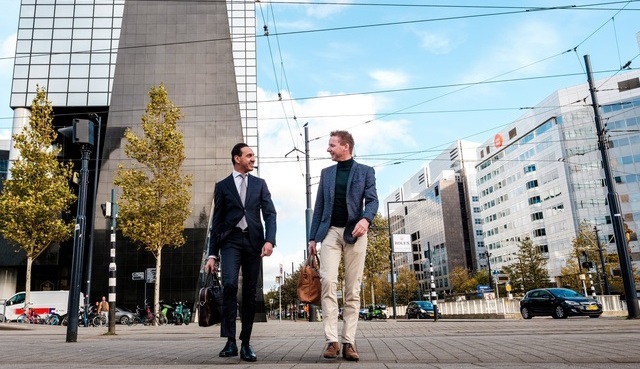Budget Day Special 2025
Energy & environment

Air passenger tax tax
It is proposed to apply a differentiated rate to air passenger tax instead of a flat rate as from 2027. The existing flat-rate system (€ 29.40 in 2025) is being replaced by a progressive rate structure in three distance categories based on the final destination:
-
Low rate: € 29.40 per pax from 0 to circa 2,000 km;
-
Average rate: € 47.24 per pax between circa 2,000 and 5,500 km; and
-
High rate: € 70.86 per pax for more than circa 5,500 km.
The scheme is an exhaustive list by country for practicability purposes, based on the point-to-point distance from Amsterdam. This raises the taxes on long-haul flights.
Take note!
Flights to Aruba, Curaçao, Sint Maarten, Bonaire, Sabaand Sint-Eustatius will be taxed against the lowest rate, because they are part of the kingdom of the Netherlands.
Aggregation rule of maximum amount of Energy-saving Investment Credit (EIA)
The energy-saving investment credit (energie-investeringsaftrek, EIA) is a scheme designed to provide an incentive for investments in energy-saving assets. Companies can deduct 40% of their investments from taxable profits, up to a combined maximum investment amount of €151 million per year. Due to the lack of an aggregation rule, a private company participating in a joint venture (e.g. a limited partnership) could make use of this maximum more than once. To prevent this, an aggregation ceiling is introduced. This ceiling consists of investments in the proprietary company and investments in a company which is part of a joint venture.
Take note!
Investments made by a joint venture in which the taxpayer participates, also count towards the maximum amount of energy-saving investment credit (EIA).
Update of standard industrial classification (SBI) for energy tax
The Environmental Taxes Act (Wet belastingen op milieugrondslag, Wbm) refers to outdated SBI 2008 codes in three energy tax exemptions. As of 6 September 2025, these have been replaced by the standard industrial classification (SBI) 2025 codes. The change in the law updates the references to SBI codes 23, 24 and 25 in the exemptions for electricity in the case of chemical reduction and metallurgical processes, and natural gas in the case of metallurgical and mineralogical processes. The substantive application remains unchanged.
Tip!
After the update, verify that the energy tax exemption is applicable based on the standard industrial classification (SBI) 2025 codes.
Maximum tap water tax
The current maximum of 300 m³ of tap water tax will increase to 50.000 m³ in 2026 and will be abolished as of 2027. This will ultimately lead to levied taxes on the full consumption. Simultaneously, the tax base is narrowed down to water of drinking water quality and the '1,000 customers scheme' no longer applies as of 2027. This simplifies the levy, ensures a wider burden-sharing, and provides an incentive for major consumers to save water. Small collective provisions are still the exception.
Tip!
Keep account of rising charges for major consumers from 2027.
Waste tax reforms
The waste tax will be reformed as of 2027 by abolishing the exemption for sewage sludge and as of 2029 by introducing a separate, higher rate for landfill with exemption. In addition, there is a significant rise in the general rate: from €39.70 per tonne at present to €90.21 in 2028 and structurally to €113.81 from 2035 (2025 price level). These measures increase revenue, discourage land-filling and incineration, and should contribute to reducing environmental burdens.
Changes to industry’s carbon emissions levy
The government recognizes the difficult position for ETS1 and nitrous oxide plants, as well as the international market in which these businesses operate. For ETS1 and nitrous oxide plants, the carbon emission levy is therefore reduced to €78.67 per tonne, with wider dispensation rights remaining in place. As a result, these businesses will hardly be affected by the levy until 2030. However, for waste incineration plants, the levy is being tightened: the rate is €295 per tonne of carbon emission in 2030; the exemption will be phased out to zero between 2030 and 2033; and trading of allowances with other sectors is out of the question. This creates a stronger incentive to apply carbon capture storage (CCS).
Tax relief on Energy Tax
Households and businesses will face a further increase in energy bills in the coming years, partly due to rising grid charges for electricity. As a concession, the tax relief in energy tax is structurally being increased in respect of the base path, rising from €510.50 (excluding VAT) in 2026 to €521.17 (excluding VAT) in 2030. This mainly benefits households (91%) and to a lesser extent businesses (9%). The measure only applies to residential and commercial buildings with a residential function.
Getting in touch is the first step
Leave your details and we will respond within 2 working days
